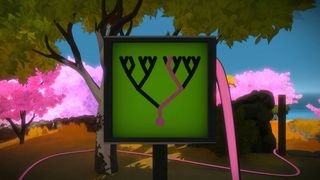

That sounds really simple, but trust me, it's not. In the puzzle above, you just need to draw a line from a circle to a nub. You walk up to the puzzle, then press a button, which locks you in place and produces a small cursor on the screen. Nearly all of them (maybe all of them?) involve drawing lines.

The island is densely packed with puzzles, some propped up for you to solve, many others masterfully hidden. You come upon them by wandering, in a first-person perspective, through the most beautiful island I've ever been to in a video game. They're grids, seldom larger than six by six squares. "It's this one," I wrote in my e-mail to Blow, "which seems so simple, and yet." I attached a photo.Ī lot of puzzles in The Witness look like that. You know in the back of your mind that it isn't, and you're just a failure. It's the thing you do when you've tried everything else and are considering, hubristically, that maybe the problem is with the game. I view this sort of thing-e-mailing a game developer questions about his difficult game-as a last resort. I'm wondering if you can tell me if I should be able to solve it or if it is dependent on me doing something else in the game first." "One puzzle, though, is really vexing me," I continued, "I'm not sure if I should be able to solve it yet. I needed him to know that I hadn't buckled early. "I've solved a LOT of puzzles." I listed my accomplishments in the game so far. "I've been playing for much of the day and am having a good time," I wrote. I feared that Blow's magnificent new puzzle game had deadended my ability to reach a solution. While playing The Witness for this review, I wrote an email to its lead creator, Jonathan Blow.


 0 kommentar(er)
0 kommentar(er)
